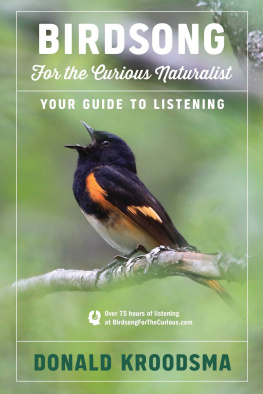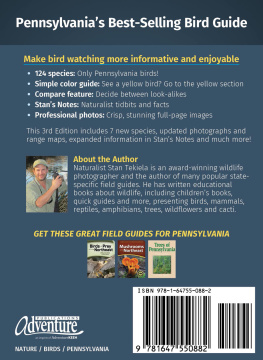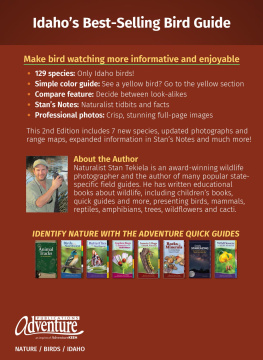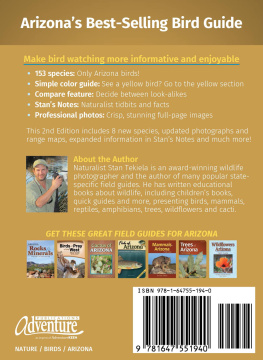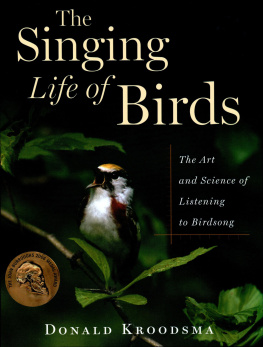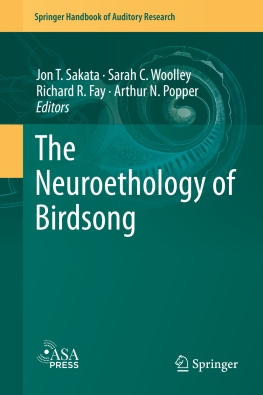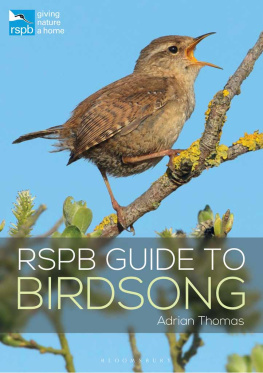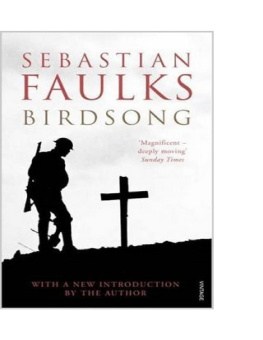Copyright 2020 by Donald Kroodsma
All rights reserved
For information about permission to reproduce selections from this book, write to or to Permissions, Houghton Mifflin Harcourt Publishing Company, 3 Park Avenue, 19th Floor, New York, New York 10016.
hmhbooks.com
Library of Congress Cataloging-in-Publication Data is available.
ISBN 978-1-328-91911-3
Cover design by Martha Kennedy
Cover photograph Laure Neish/Nature Niche
Author photograph Janet Grenzke
eISBN 978-1-328-91913-7
v2.0220
for Janet
The bird did fly
Like the wind in the sky.
The bird did sing
With a special type of ring.
Jon (third grade)
Thank you for teaching me that if I listen,
there is song everywhere.
Juliet (kindergarten)
Acknowledgments
I am especially indebted to Olin Sewall Pettingill, Jr., who, during the summer of 1968 at the University of Michigan Bug Camp (Pellston, Michigan), asked me to work off a $100 fellowship by recording some birds; that project changed my life. John Wiens, graduate advisor at Oregon State University from 1968 to 1972, gave me free rein to pursue birdsong, as did Peter Marler from 1972 to 1980 at the Rockefeller University Field Research Center.
For this book, a huge thank you to the photographers for sharing their hard-earned images: Wil Hershberger, Laure Wilson Neish, Marie Read, Robert Royse, Brian Small, and John Van de Graaff. And to the generous recordists for sharing their sounds: Mieko Aoki, Greg Budney, Greg Clark, Lang Elliott, Janet Grenzke, Wil Hershberger, Brad Jackson, Richard (Nels) Nelson, and Charlie Walcott.
Thank you to each Birds of North America author, for freely sharing insights about your species. My guide to the world of birdsong is written not only with my half century of accumulated knowledge, but also with the wisdom of countless others who share my passions.
Thank you to Eldon Greij, for keen advice on bird photos; to Greg Budney, Karl Fitzke, and Bill McQuay, for your technical skills and contagious enthusiasm for the sounds of our natural world; to Sylvia Halkin and Walter Berry, for your steady support; to Lisa Ekus, for sharing your cardinals; to Mark Robbins, for knowing Kansas bird sounds; to David Stewart, for your inspirational introduction to Australian birds; to graduate students at the University of Massachusetts from 1980 to 2003, for your own inspiring love of birdsong and what its all about; to Kenda Kroodsma, for your invaluable editorial revisions; and to countless others who have, over the last half century, enhanced my journey with birdsong in so many different ways.
Heres a huge thank you to Bruce Byers, who began as a graduate student in the 1980s, only to become my go-to colleague for any question about birdsong or science in general. Bruce, youre topsthe journey would have been far less fun and insightful without you!
Regina Ryan, you are the best agent ever! Thank you.
Houghton Mifflin Harcourt team: Lisa White, field guide editor par excellence, copyeditor Loma Huh, production editor Beth Burleigh Fuller, designer/compositor Eugenie S. Delaney, and proofreader Fran Pulver. Janet Grenzke studied the entire manuscript, offering insightful suggestions for improvement (shes always right, Ive learned). She has been my partner in recording for the past decade, relishing those early mornings, always eager for the next quest. Her fine recordings strengthen the book. Thank you, Janetfor being the queen of logistics, for providing your undying support, for making our book happen.
1. Beginnings
THE MAGIC AND MYSTERY OF BIRDSONG
Birdsong fills our lives with beauty and wonder. The beauty is everywhere and inescapable: a robin caroling after a rain, a thrush fluting in the forest, a wren babbling in the brush, any bird with an unknown name who moves us. Autumn and winter are dreadfully quiet, and we eagerly anticipate the return of spring and song. Singing birds are happy and sing for joy, we want to conclude, but all we can know for sure is our own happiness and joy in hearing them.
And the curious among us wonder, beginning with simple questions that inevitably take us on unanticipated adventures. Just what is a bird? Why does it sing or call? How does it sing, and what does it hear? Where does a bird get its song? Is it inborn or learned? If learned, when and where and from whom does the youngster learn? How do learned songs change from place to place, in the form of dialects? Which birds mimic other species? How many different songs can a bird sing? How do birds go to roost, or awake, or sing so energetically at dawn, or sing through the night? Which birds do what? And in all the listening, what is it about birdsong that we find so beautiful, so musical?
It is the wonder that drives this book, as a quick scan of the Contents will reveal. In the following pages are great joy and happiness, just waiting for youand adventure, too. Explore the listening projects, and your appreciation and love of birdsong and the natural world will unfurl.
WHERE AND HOW TO LISTEN
Throughout the book, we listen to hundreds of singing and calling birds. You can access the sounds and more information about them in two ways:
As you encounter the numbered recordings in the text of this book, go directly to the website BirdsongForTheCurious.com and find the corresponding numbered recording. The text in the book and on the website will guide you in your listening.
Alternatively, you can go directly to the recordings on the internet by using the QR (Quick-Response) codes provided throughout the book. With a QR code reader (free, available for download to smartphones), simply scan the QR code, and you will be whisked to the appropriate page on the website, where you can play the chosen sound and read all about it. Try that for the QR code to the left and you will find yourself at the home page for this books website.
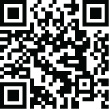
When you listen, for best effect please use headphones. You minimize extraneous noises this way, and it is then just you and the bird singing directly into your ears. The stereo effect of many of the recordings is also better heard with headphones.
Altogether, more than 75 hours of fine listening and exploring await you. I invite you to linger and listen, to enjoy a sage thrasher singing through the night (), to appreciate the masterful performance of a western meadowlark (Explore 70). I challenge you to listen to this singing planet as you have never listened before. Dont settle for a few brief sound bites that provide the minimum clues needed to successfully identify a bird to species. No, strive for a deeper understanding of each singing bird, trying to fathom who it is, whats in its head, why in this moment it is singing the way it is. A singing robin is never just a robin, for example, but an individual expressing his mind, maybe even a thought. So I pause and I listen, often for hours, and sometimes for days to a single bird, out of admiration, respect, and wonder. The depth and range of recordings in this guide provide you with opportunities that you can find nowhere else, and you can choose to explore as deeply as you wish.
Explore ON YOUR OWN
In 77 places throughout the book, after introducing a topic and providing some examples from common birds throughout North America, I invite you to Explore on your own. Although this guide contains a wealth of recorded songs that you can study, there is nothing more satisfying than exploring the natural world firsthand, on your own. The text for 48 of these Explores is provided in the book, and another 29 are on the website (BirdsongForTheCurious.com).

